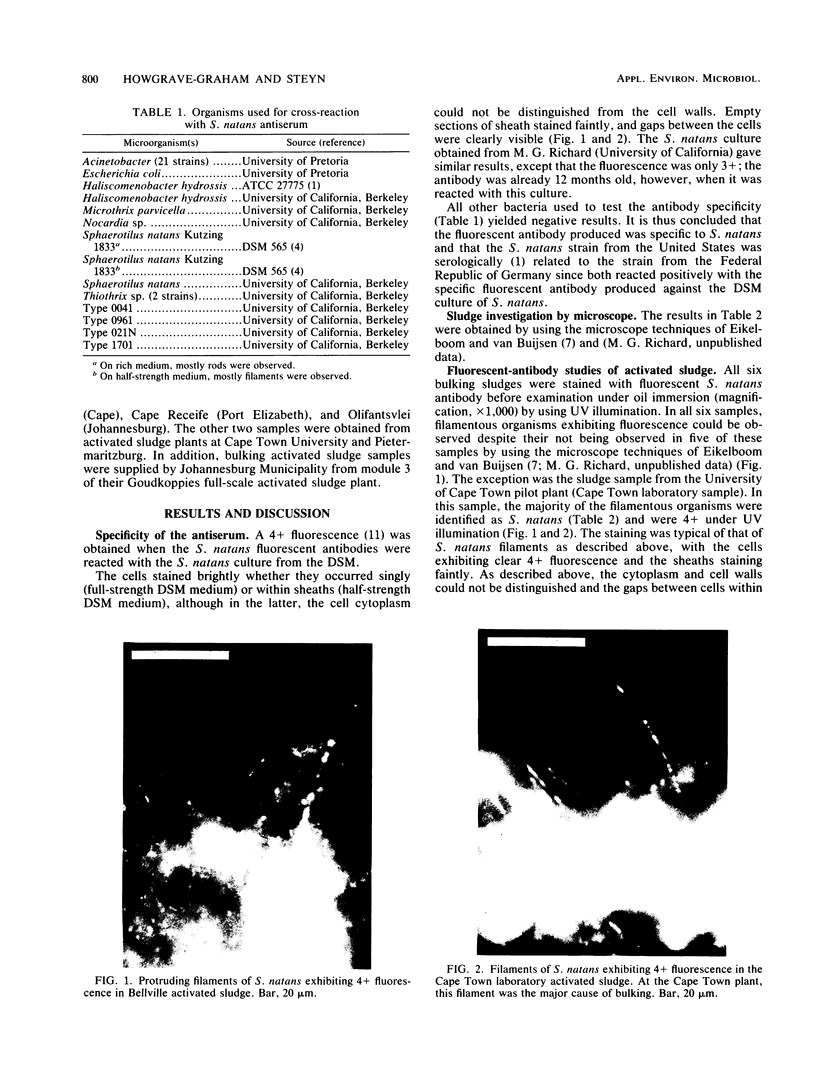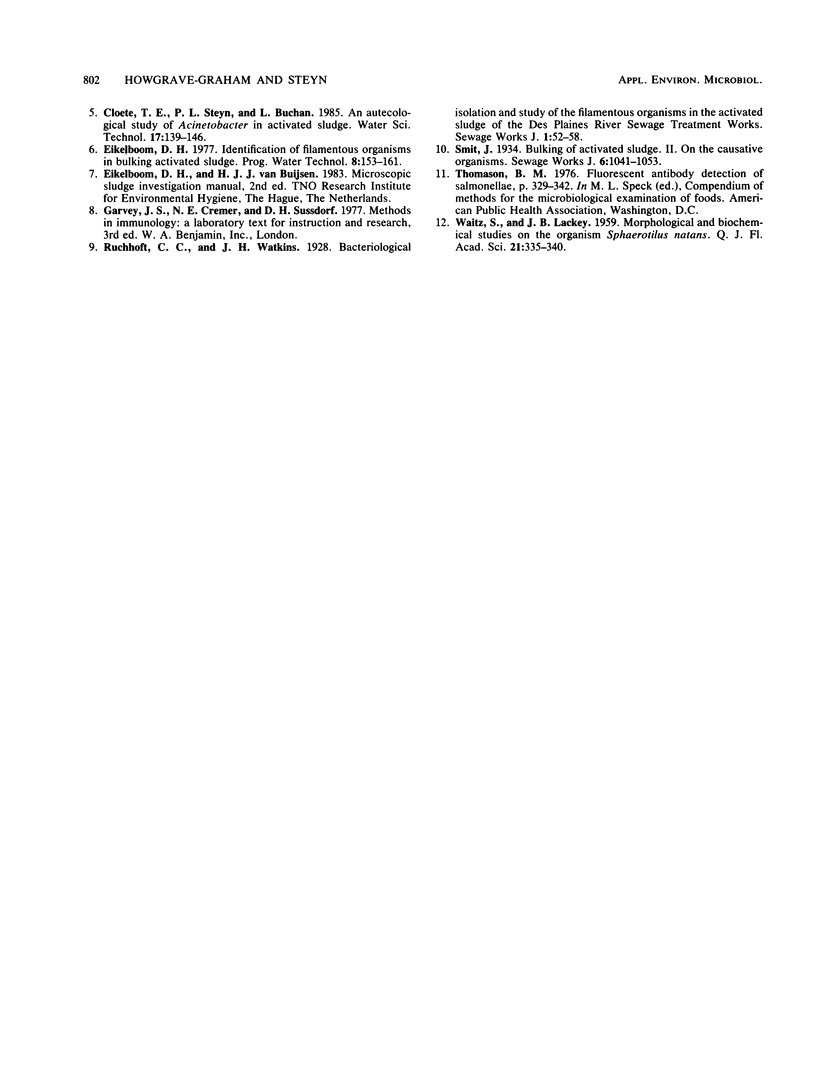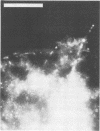Abstract
Sphaerotilus natans, one of the most widely reported causes of bulking in activated sludge, can exist both within and outside of a sheath. It can easily be confused with similar activated sludge bacteria and thus can be overlooked when present in low numbers. Fluorescent antiserum was successfully prepared against the nonfilamentous form and was shown to be highly specific, showing no reaction with either pure cultures of similar filamentous bacteria or entirely unrelated organisms. It did, however, show a lack of strain specificity since it reacted with S. natans isolates from the Federal Republic of Germany and the United States and with filamentous bacteria in South African activated sludges. Fluorescent antibody is capable of penetrating the filaments of S. natans to stain the cells individually. The use of fluorescent antiserum in the identification of S. natans filaments obscured by activated sludge flocs and other suspended matter was simple since the cells stained brightly and could be observed through the less dense matter, while the use of other microscope techniques would be hampered by these obstructions. The use of fluorescent antibody will facilitate ecological studies of S. natans in activated sludge and other aqueous environments.
Full text
PDF







